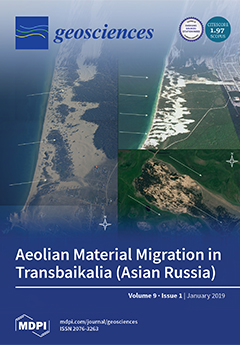Open AccessArticle
First Macro-Colonizers and Survivors Around Tagoro Submarine Volcano, Canary Islands, Spain
by
Ana Sotomayor-García, José L. Rueda, Olga Sánchez-Guillamón, Javier Urra, Juan T. Vázquez, Desirée Palomino, Luis M. Fernández-Salas, Nieves López-González, Marcos González-Porto, J. Magdalena Santana-Casiano, Melchor González-Dávila, Carmen Presas-Navarro and E. Fraile-Nuez
Cited by 15 | Viewed by 5184
Abstract
Tagoro, the youngest submarine volcano of the Canary Islands, erupted in 2011 South of El Hierro Island. Pre-existing sea floor and inhabiting biological communities were buried by the newly erupted material, promoting the appearance of new habitats. The present study pursues to describe
[...] Read more.
Tagoro, the youngest submarine volcano of the Canary Islands, erupted in 2011 South of El Hierro Island. Pre-existing sea floor and inhabiting biological communities were buried by the newly erupted material, promoting the appearance of new habitats. The present study pursues to describe the first metazoans colonizing different new habitats formed during the eruption and to create precedent on this field. Through dredge and remote operated vehicle samplings, five main habitat types have been detected based on the substrate type and burial status after the eruption. Inside the Tagoro volcanic complex (TVC), two new habitats are located in and around the summit and main craters—hydrothermal vents with bacterial mats and sulfurous-like fields mainly colonized by small hydrozoan colonies. Two other habitats are located downslope the TVC; new hard substrate and new mixed substrate, holding the highest biodiversity of the TVC, especially at the mixed bottoms with annelids (
Chloeia cf.
venusta), arthropods (
Monodaeus couchii and
Alpheus sp.), cnidarians (
Sertularella cf.
tenella), and molluscs (
Neopycnodonte cochlear) as the first colonizers. An impact evaluation was done comparing the communities of those habitats with the complex and well-established community described at the stable hard substrate outside the TVC, which is constituted of highly abundant hydrozoans (
Aglaophenia sp.), antipatharians (
Stichopates setacea and
Antipathes furcata), and colonizing epibionts (e.g.,
Neopycnodonte cochlear). Three years after the eruption, species numbers at Tagoro were still low compared to those occurring at similar depths outside the TVC. The first dominant species at the TVC included a large proportion of common suspension feeders of the circalittoral and bathyal hard bottoms of the area, which could have exploited the uncolonized hard bottoms and the post eruptive fertilization of water masses.
Full article
►▼
Show Figures





